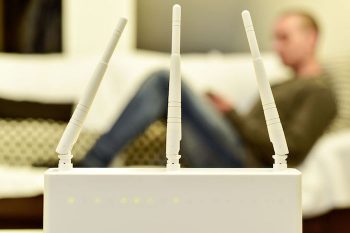By Sayer Ji
Contributing writer for Wake Up World
Recent research indicates that our increasingly Wi-Fi saturated environment could be greatly amplifying the dangers of mercury exposure from dental amalgams.
A new study published in the Journal of Neuroimmunology, entitled, “Effect of radiofrequency radiation from Wi-Fi devices on mercury release from amalgam restorations”, reveals that our now ubiquitous exposure to Wi-Fi radiation may be amplifying the toxicity of dental amalgams and other forms of mercury exposure in the human body.
In what appears to be the first study of its kind, Brazilian researchers looked specifically at the potential for Wi-Fi signals to increase the release of mercury from dental amalgams, which are composed of approximately 50% elemental mercury.
[pro_ad_display_adzone id=”110028″]
The highly controlled method researchers used was to recreate amalgam-filled teeth using standard protocols and then storing them in saline solution at 37° C for 14 days. The 14 day period was chosen because previous research has revealed mercury is released from amalgam restorations at gradually decreasing amounts to a constant level 14 days after the filling. 1Afterwards, and before exposing the teeth to Wi-Fi signals, samples were poured into plastic tubes filled with artificial saliva at a 1.5 cm thickness to mimic soft tissue.
Next, the researchers divided the teeth randomly into 2 groups of 10. The specimens in the experimental group were exposed to a radiofrequency radiation emitted from standard Wi Fi devices at 2.4 GHz for 20 min. The distance between the Wi-Fi router and samples was 30 cm and the router was exchanging data with a laptop computer that was placed 20 meters away from the router. The control group were not exposed to Wi-Fi.
The results statistically significant, with the mean concentration of mercury in the Wi-Fi group about twice of the control group. The details were as follows:
“The mean (±SD) concentration of mercury in the artificial saliva of the Wi-Fi exposed teeth samples was 0.056 ± .025 mg/L, while it was only 0.026 ± .008 mg/L in the non-exposed control samples. This difference was statistically significant (P =0.009).”
The authors conluded:
“Exposure of patients with amalgam restorations to radiofrequency radiation emitted from conventional Wi-Fi devices can increase mercury release from amalgam restorations.”
In the discussion section of their paper, they point to previous research that has also found exposure to both MRI, and microwave radiation from cell phones, also produce increased release of mercury from dental amalgam.
We’ve discussed the dangers of laptops and mobile phone radiation in previous articles, available below:
- Neurosurgeon Reveals Radiation from Wi-Fi, Smart Meters and Cell Phones Cause the Blood-Brain Barrier to Leak
- Brain Wave Warping Effect of Mobile Phones, Study
- 10 Shocking Facts About the Health Dangers of Wi-Fi
- EMF Radiation: a New Cause of Breast Cancer?
- Why Laptops Should Be Renamed To Protect Consumers
- WiFi in Schools Shown to Cause Health Problems. Is Your Child at Risk?
For evidence-based research on the health impacts of Wi-Fi Radation, visit the GreenMedInfo.com Research Dashboard.
Reference:
- [1] Müller?Miny H, Erber D, Möller H, Müller?Miny B, Bongartz G. Is there a hazard to health by mercury exposure from amalgam due to MRI? J Magn Reson Imaging. 1996;6(1):258–60. doi: 10.1002/jmri.1880060146. [PubMed] [Cross Ref]
About the author:
Sayer Ji is the founder of Greenmedinfo.com, a reviewer at the International Journal of Human Nutrition and Functional Medicine, Co-founder and CEO of Systome Biomed, Vice Chairman of the Board of the National Health Federation, and Steering Committee Member of the Global Non-GMO Foundation.
For more, visit GreenMedInfo.com and Facebook.com/GreenMedInfo, or sign up for GreenMedInfo’s free e-Newsletter.
Recommended articles by Sayer Ji:
- Black Seed Oil Puts Deadly Asthma Medications to Shame
- Participating in Drum Circles Improves Health and Quality of Life in Parkinson’s Patients (Study)
- Acupuncture Beats Injected Morphine for Pain: Groundbreaking Study
- Mammography Is Harmful and Should Be Abandoned, Scientific Review Concludes
- “Killer Germs” Obliterated by Medicinal Smoke Smudging, Study Reveals
- 6 Evidence-Based Ways Drumming Heals Body, Mind and Soul
- Coconut Water: A New Alzheimer’s Disease Treatment?
- Turmeric’s ‘Smart Kill’ Properties Put Chemo & Radiation To Shame
- Beet Juice Boosts Cognitive Function In One Dose
- 13 Evidence-Based Medicinal Properties of Coconut Oil
- Group Drumming Better Than Prozac, Study Suggests
- 25 Cancer Stem-Cell Killing Foods That Are Smarter Than Chemo and Radiation
- Splenda Suppresses Thyroid Function, Promotes Weight Gain
[pro_ad_display_adzone id=”110027″]








